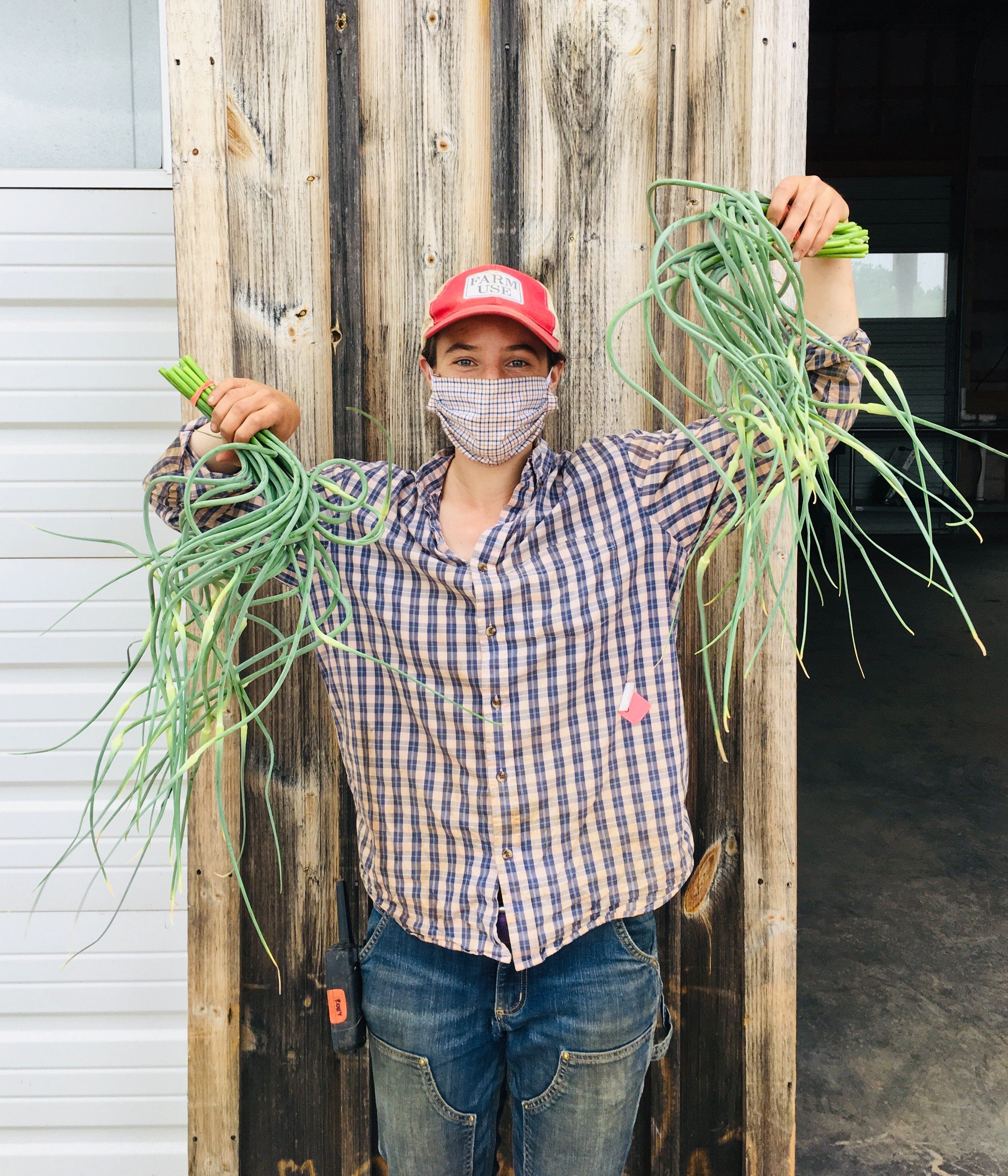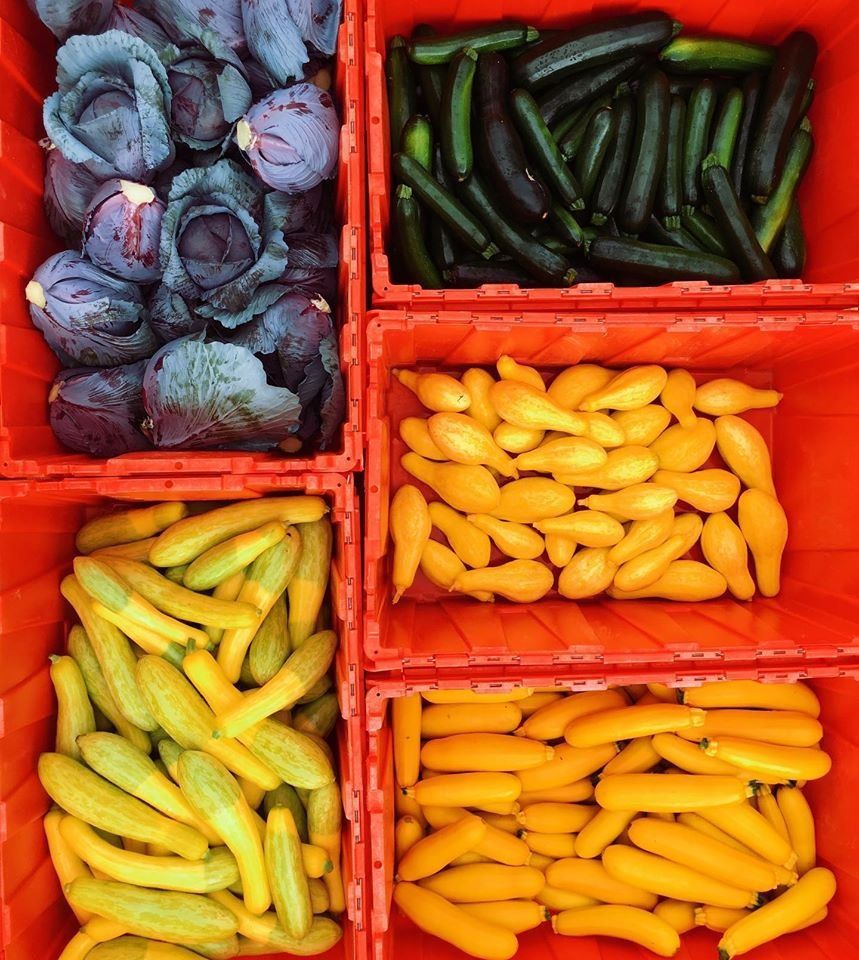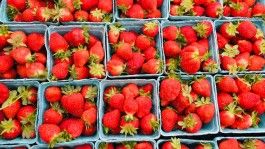Have you ever sipped your morning coffee on a chilly day in October, contemplating the lifespan of a strawberry? If you answered yes, you must have the soul of a farmer! Strawberries are always one of our most popular crops, one that we all eagerly await and quickly devour. We usually start fielding questions about their progress in May and sharing shortcake recipes in June, but the work began months ago.
We love social media (especially during social distancing), but a photo of a beautiful day or a beautiful pint of berries can be misleading. No moment in time on the farm happens without preparation and planning. In October, we planted three varieties of strawberries: Chandler, Camarosa, and Fronteras. Some went into the ground as plugs, and some as bare roots. Since then, they’ve slept through winter under straw mulch, been weeded, watered, and weeded again. The hardiest plants survived both the deceptive warmth of April and the harsh frosts of late May. All of these varieties are “June-bearing”, but strawberries are governed by weather more than calendars. June-bearing really means that they put out one large spring crop. We stagger the plantings a bit in Autumn to stretch the harvest, but the real sweetness of the strawberry comes from the culmination of all those months of past work into only two weeks or so of ripe berries.
Everything we harvest started as a line item on a spreadsheet, then grew to a note on a field diagram. Our crop plan choreographs work across three seasons, multiple farms, and many acres. It’s a careful, multi-layered dream for the upcoming season that tells us the strawberry fields will run their course and give way to successions of cucumbers. We like to think of it as a dinner party that begins in May and goes on to November, with a fresh course served each week. Are you excited to see what fresh flavor is headed your way next?
Eat well and be well,
Ashley, Collin, John, Lex, Alexandra, Rory, Nate, James, and all the hens, hogs, and dogs
Meal Plan
- The first green beans of the season are in and there are so many wonderful ways to enjoy them! When working with very fresh beans, it is sometimes best to keep it simple and let the flavor of the bean shine through. Perhaps this recipe for Simple Skillet Green Beans is the best first bean recipe of the season.
- Nothing wrong with a little spice in your life! These Kickin' Collard Greens are a great way to use these summer-loving greens. Did you know collards are not only quite heat tolerant, but also can survive bitter cold? They are truly a versatile green that should be a staple in every Virginia kitchen.
- Salad radishes are most often thought of as a freshly-eaten item, though they are delicious roasted. This simple, yet tasty Garlic Roasted Radish recipe takes this approach to tame the spice and enhance the sweetness. Substitute 5-6 garlic scapes for the cloves and use farm-fresh parsley instead of dried to have a truly local meal.
- When walking the fields to see if the beets were ready, I pulled a few to take home. When weighing what to do with them, I decided to make this Greek Beet and Beet Greens Pie, which not only makes good use of the beets and their greens, but also dill, parsley, and mint. I used garlic scapes instead of garlic, and had a few farm-fresh eggs to hold it all together. Now I've just got to get a dairy cow so I can make some feta...







